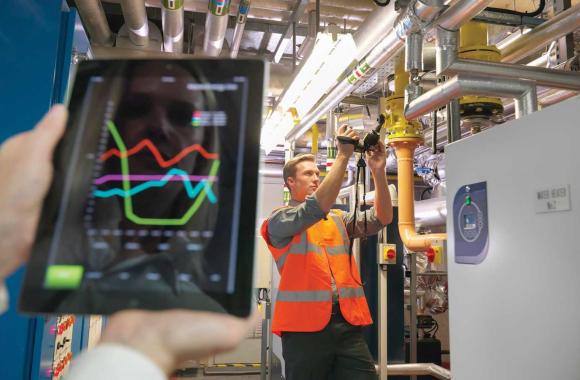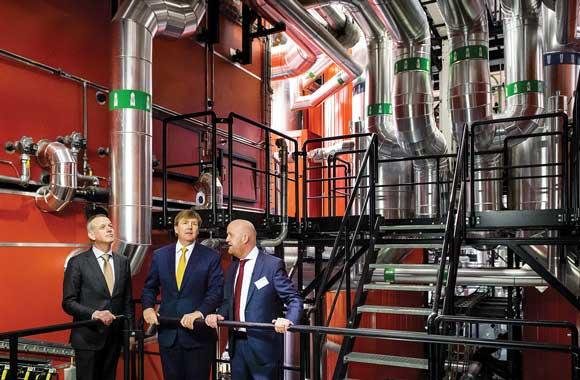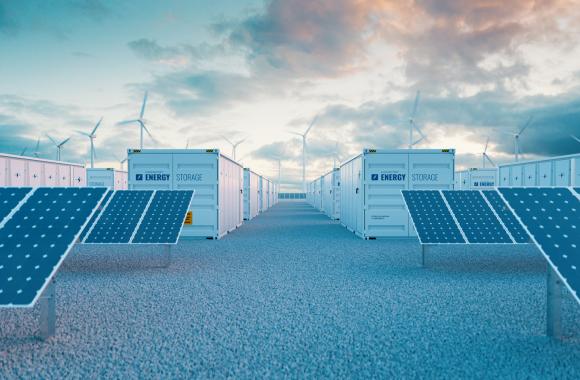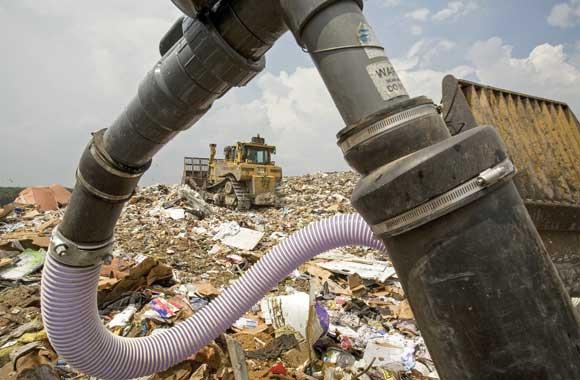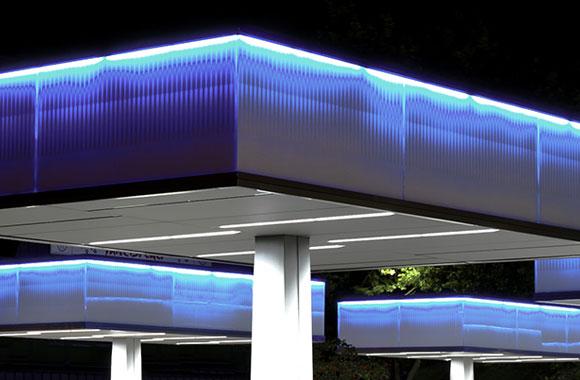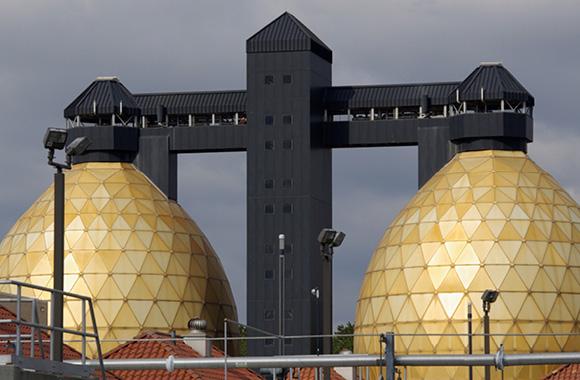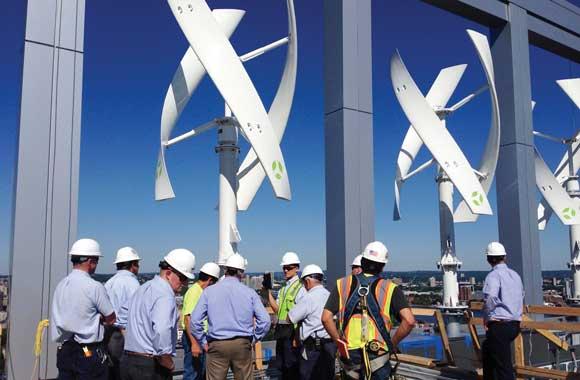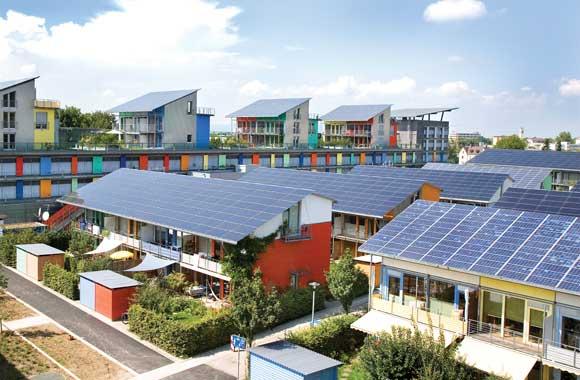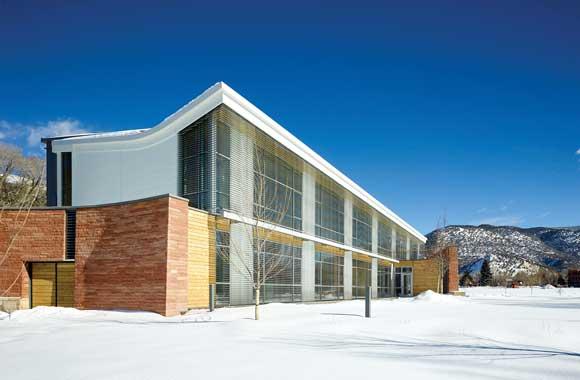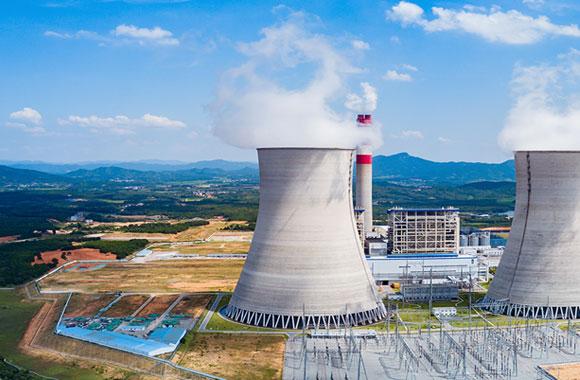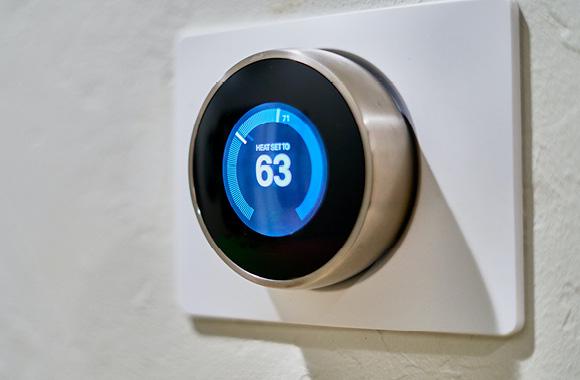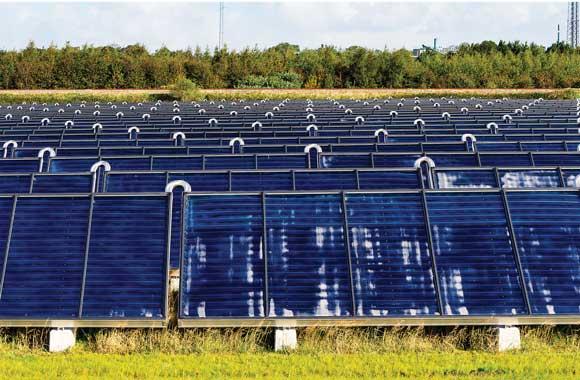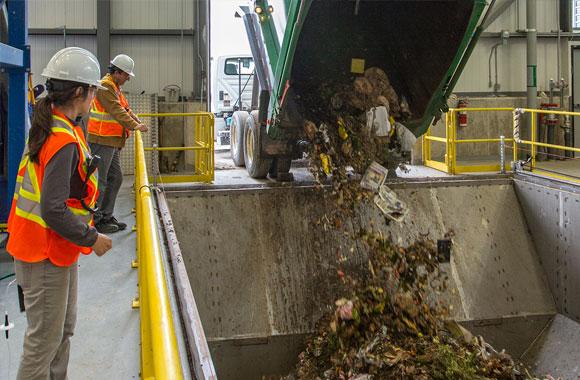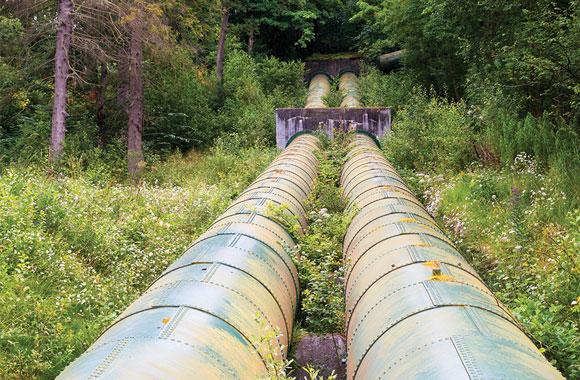Concentrated Solar Power
Concentrated solar power uses sunlight as a heat source. Arrays of mirrors concentrate incoming rays onto a receiver to heat fluid, produce steam, and turn turbines.
Reduced/Sequestered
2020–2050
To Implement
Operational Savings
Impact
Concentrated solar power generated 0.05 percent of the world’s electricity in 2018. This analysis assumes that this solution could rise to 8–6 percent of world electricity generation by 2050, avoiding 18.00–21.51 gigatons of greenhouse gas emissions, with a net first cost to implement of US$481.52–576.86 billion. A benefit of concentrated solar power in addition to greenhouse gas mitigation is that it can store energy, allowing for extended use after dark or during peak demand periods.
Introduction
Concentrated solar power (CSP) is a technology that uses heat from the sun concentrated on a small area with mirrors to generate steam that turns turbines to produce electricity. Because it generates heat rather than electricity as solar photovoltaic technology does, CSP makes it possible to store renewable energy without the need for batteries. It replaces conventional electricity-generating technologies such as coal, oil, and natural gas power plants.
Four CSP technologies predominate: 1) parabolic trough collectors (PTC), 2) parabolic dish collectors (PDC), 3) heliostat field collectors (towers), and 4) linear Fresnel reflectors (LFR). Though PTC is the oldest and is most widespread, tower technology (the newest) is the most likely to gain traction, since it is the most economically viable technology that also incorporates storage—an increasing requirement of CSP. This analysis models all CSP technologies with and without storage.
Methodology
Total Addressable Market
We based the total addressable market for the Concentrated Solar Power solution on projected global electricity generation from 2020 to 2050. The total addressable market is different for the two adoption scenarios because Scenario 2 projects extensive electrification of transportation, space heating, etc., dramatically increasing demand and therefore production of electricity worldwide.
We estimated current adoption (the amount of functional demand supplied in 2018) at only 0.06 percent of total global electricity generation.
CSP is particularly promising in regions with more than 2.5 megawatt-hours per square meter per year of sunlight, such as in the southwestern US, Central and South America, Northern and Southern Africa, the Mediterranean countries of Europe, the Near and Middle East, Iran, and the desert plains of India, Pakistan, the former Soviet Union, China, and Australia (ESTELA, 2016). We account for this regional potential in the external sources projections.
Adoption Scenarios
We calculated impacts of increased adoption of concentrated solar from 2020 to 2050 by comparing two growth scenarios with a reference scenario in which the market share was fixed at current levels.
- Scenario 1: This scenario is based on the evaluation of yearly averages of four optimistic scenarios: IEA (2017) Energy Technology Perspectives 2DS and B2DS scenarios; IEA (2018) World Energy Outlook SDS; Advanced Scenario from the Greenpeace Solar Thermal Electricity Global Outlook 2016 (Greenpeace et al., 2016). It follows a medium growth trajectory. It involves generation of 3,273.12 terawatt-hours of concentrated solar power (8 percent of the total addressable market).
- Scenario 2: The scenario projects a 100 percent adoption of non-fossil-fuel-based technologies in 2050. For this solution, the adoption scenario follows a high growth trajectory derived from the above-mentioned model’s scenario results used in Scenario 1. It involves generation of 4,069.00 terawatt-hours of concentrated solar power (6 percent of the total addressable market).
Financial Model
All monetary values are presented in 2014 US$.
Based on a meta-analysis of data collected from CSP systems around the world, we assumed an average installation cost of US$6,339 per kilowatt with a learning rate of 20.3 percent, reducing the cost to US$1,623 per kilowatt in 2030 and US$962 in 2050. We used an average capacity factor of 31 percent, compared with 57 percent for conventional technologies such as coal, natural gas, and oil power plants. Variable operation and maintenance costs were US$0.046 per kilowatt-hour and fixed costs US$63.7 per kilowatt, compared with US$0.005 and US$43.7, respectively, for the conventional technologies.
Integration
We adjusted the total addressable markets to account for reduced demand resulting from the growth of more energy-efficient technologies (e.g., LED Lighting and High-Efficiency Heat Pumps) as well as increased electricity demand due to the implementation of other solutions such as Electric Cars and High-Speed Rail. We calculated grid emissions factors based on changes in the mix of electricity-generating technologies over time. We determined emissions factors for each technology through a meta-analysis of multiple sources, accounting for direct and indirect emissions.
Results
The net first cost to implement Scenario 1 is US$481.52 billion from 2020 to 2050, with US$0.86 trillion in lifetime net operational costs. Carbon dioxide equivalent greenhouse gas emissions are reduced 18.00 gigatons over 2020–2050.
Scenario 2 requires an estimated US$576.86 billion in cumulative first costs and has a lifetime net operational cost of US$1.08 trillion. Greenhouse gas emissions are reduced by 21.51 gigatons of carbon dioxide equivalent over 2020–2050.
Discussion
CSP has significant potential for helping reduce greenhouse gas emissions in an increasingly affordable way. However, the competition and growth of other more mature and less expensive renewable energy sources, such as Onshore Wind Turbines, Distributed Solar Photovoltaics, and Utility-Scale Solar Photovoltaics, might delay the adoption of CSP in the short run. CSP depends heavily on location due to the size of the projects and the amount of sunlight irradiance radiation needed.
The main advantage of CSP with storage over other renewable energy technologies is its ability to provide stable power when consumers demand it.
CSP capacity is projected to continue growing, but the pace will depend on the availability of supportive policies such as greenhouse gas mitigation requirements or financial and regulatory incentives for adoption. Cost reductions will be driven by increasing economies of scale, more competitive supply chains, and technology improvements that will raise capacity and/or reduce installation costs.
References
Greenpeace. (2016). Solar Thermal Electricity Global Outlook 2016. Greenpeace, SolarPACES and ESTELA. Retrieved from: http://www.greenpeace.org/international/Global/international/publications/climate/2016/Solar-Thermal-Electricity-Global-Outlook-2016.pdf
ESTELA. (2016). About STE/CSP. European Solar Thermal Electricity Association. Retrieved from: http://www.estelasolar.org/techologies-plants/concentrating-solar-power/
IEA. (2017a). Energy Technology Perspectives 2017 : Catalysing energy technology transformations. International Energy Agency. Paris. Retrieved from : https://www.iea.org/etp2017/ IEA.
World Energy Outlook. (2018). International Energy Agency (IEA). Retrieved from: https://webstore.iea.org/world-energy-outlook-2018
What You Can Do
Encourage a young person in your life to do school project exploring the pros and cons of various forms of solar power.
Learn about a concentrated solar project and share what you learn with a friend, neighbor, or colleague.
- Expand your knowledge by exploring another Drawdown solution.
Co-benefits
A concentrated solar facility is less expensive than a new coal-fired power plant.



